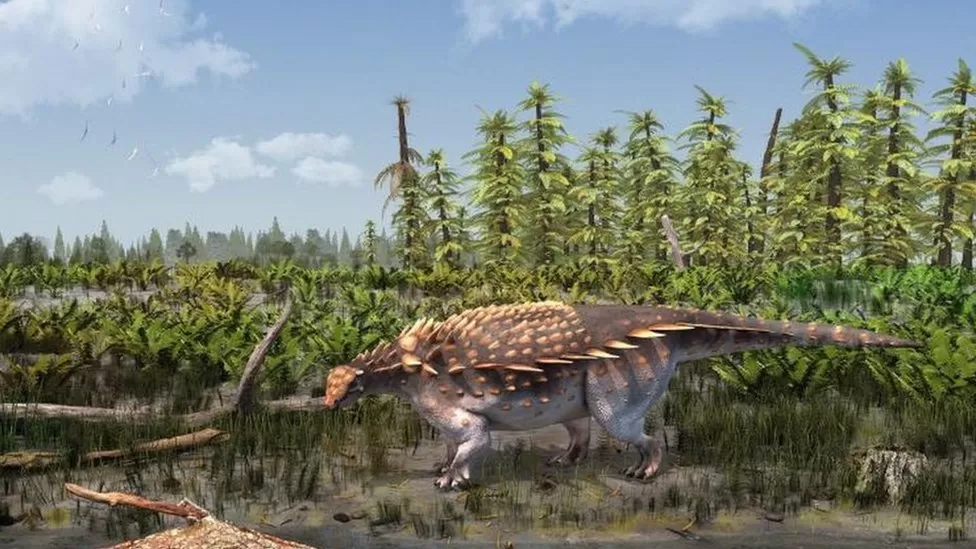The fossilised remains of a previously unknown type of dinosaur have been found on the Isle of Wight. It is the first new species of armoured dinosaur to be found on the island since 1865 and belongs to the same family – the ankylosaurs. Though fearsome in appearance with its blade-like armour, the giant reptile – which has been named Vectipelta barrette – only ate plants. It was discovered in rocks dating back between 66 and 145 million years.

The name Vectipelta barrette is a tip of the hat to Professor Paul Barrett, who has worked at the Natural History Museum in London for 20 years. He said he was “flattered and absolutely delighted to have been recognised in this way”, and insisted “that any physical resemblance is purely accidental”. Though the new dinosaur bears some similarities to the last ankylosaur discovered on the island – called Polacanthus foxii – scientists do not think the two species were very closely related. As well as having different neck, back and pelvic bones, the recent find would have had more spiked armour, scientists say.
The new species has more in common with ankylosaurs discovered in China, suggesting they moved freely from Asia to Europe in the Early Cretaceous period. Stuart Pond, a researcher at the Natural History Museum, said the find shed light on the diversity of species present in England at that time. He said the discovery would trigger reanalysis of other similar fossil remains, which scientists have assumed belonged to P foxii for well over a century.

The team behind the find said the site where the new species was found, known as the Wessex Formation, was a “hugely important” resource for understanding more about how the dinosaurs went extinct. There are competing theories about what caused the mass disappearance of dinosaurs 66 million years ago, with both an asteroid impact and massive volcanic eruptions both in the frame. The findings are described in the Journal of Systematic Palaeontology.
![]()





